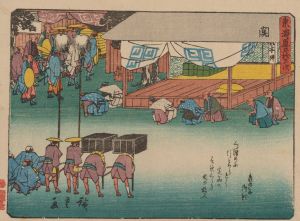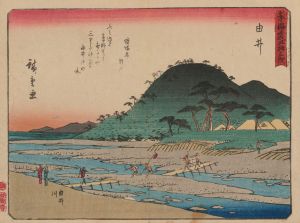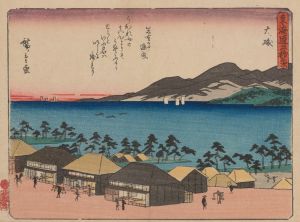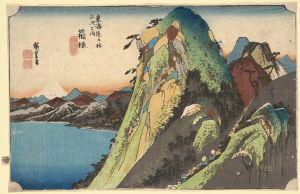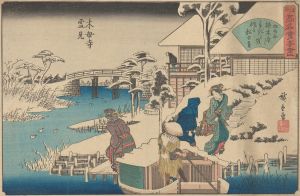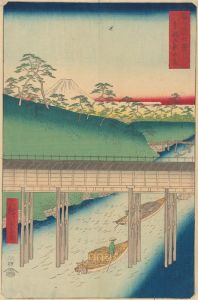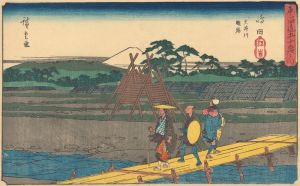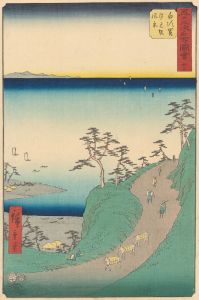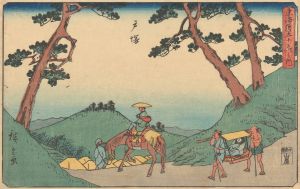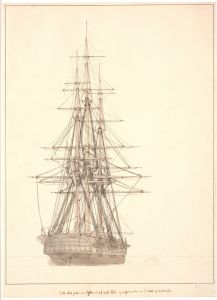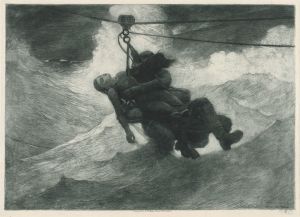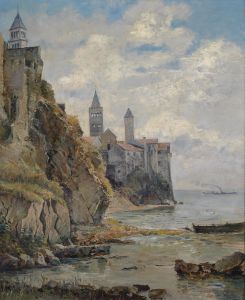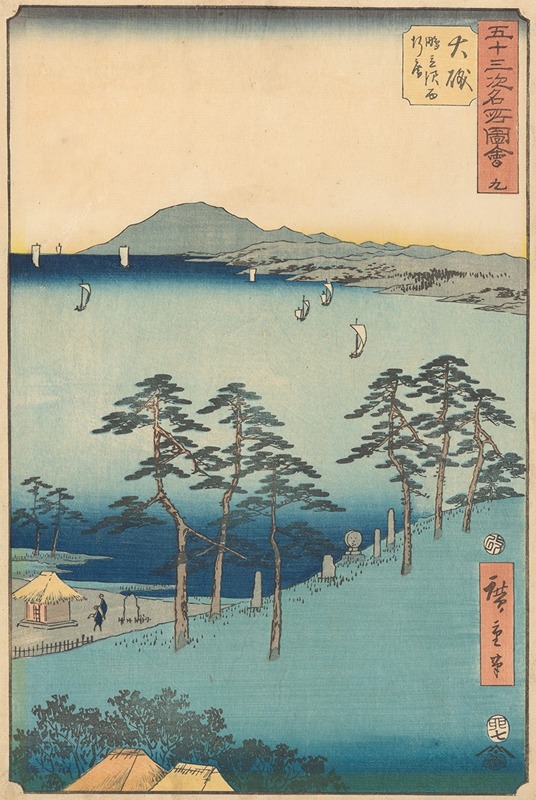
Oiso
A hand-painted replica of Andō Hiroshige’s masterpiece Oiso, meticulously crafted by professional artists to capture the true essence of the original. Each piece is created with museum-quality canvas and rare mineral pigments, carefully painted by experienced artists with delicate brushstrokes and rich, layered colors to perfectly recreate the texture of the original artwork. Unlike machine-printed reproductions, this hand-painted version brings the painting to life, infused with the artist’s emotions and skill in every stroke. Whether for personal collection or home decoration, it instantly elevates the artistic atmosphere of any space.
Oiso by Andō Hiroshige is a woodblock print that is part of the renowned series "The Fifty-three Stations of the Tōkaidō" (Tōkaidō Gojūsan-tsugi), created during the Edo period in Japan. This series, produced between 1833 and 1834, is one of Hiroshige's most celebrated works and is a quintessential example of the ukiyo-e genre, which flourished in Japan from the 17th to the 19th centuries. Ukiyo-e, meaning "pictures of the floating world," often depicted landscapes, tales from history, the theater, and scenes from everyday life.
Andō Hiroshige, born in 1797, was a master of the ukiyo-e style and is particularly known for his landscape prints. His work is characterized by its vibrant colors, dynamic compositions, and the ability to capture the transient beauty of nature. Hiroshige's "The Fifty-three Stations of the Tōkaidō" series illustrates the various post stations along the Tōkaidō road, which was the main travel and transport route between Edo (modern-day Tokyo) and Kyoto during the Edo period.
Oiso is the eighth station in this series. The print captures the essence of Oiso, a coastal town located in Kanagawa Prefecture. Known for its scenic beauty, Oiso was a popular stop for travelers journeying along the Tōkaidō road. Hiroshige's depiction of Oiso typically includes elements such as the sea, pine trees, and travelers, reflecting both the natural beauty and the bustling activity of the area.
In this particular print, Hiroshige employs a composition that draws the viewer's eye across the landscape, often incorporating a sense of movement and depth. The use of color is both subtle and striking, with blues and greens dominating the palette to evoke the coastal environment. The figures of travelers, often depicted in traditional Edo-period attire, add a human element to the scene, providing a glimpse into the daily life and culture of the time.
Hiroshige's work, including the Oiso print, had a significant influence on Western art, particularly on the Impressionist movement. Artists such as Vincent van Gogh and Claude Monet admired Hiroshige's innovative use of perspective and color, and his prints were collected and studied by many European artists in the late 19th century.
The "Fifty-three Stations of the Tōkaidō" series remains highly regarded for its artistic and historical significance. Each print, including Oiso, serves as a window into the past, offering insights into the geography, culture, and aesthetics of Edo-period Japan. Hiroshige's ability to convey the beauty and diversity of the Japanese landscape continues to captivate audiences worldwide, making his work an enduring legacy in the world of art.





